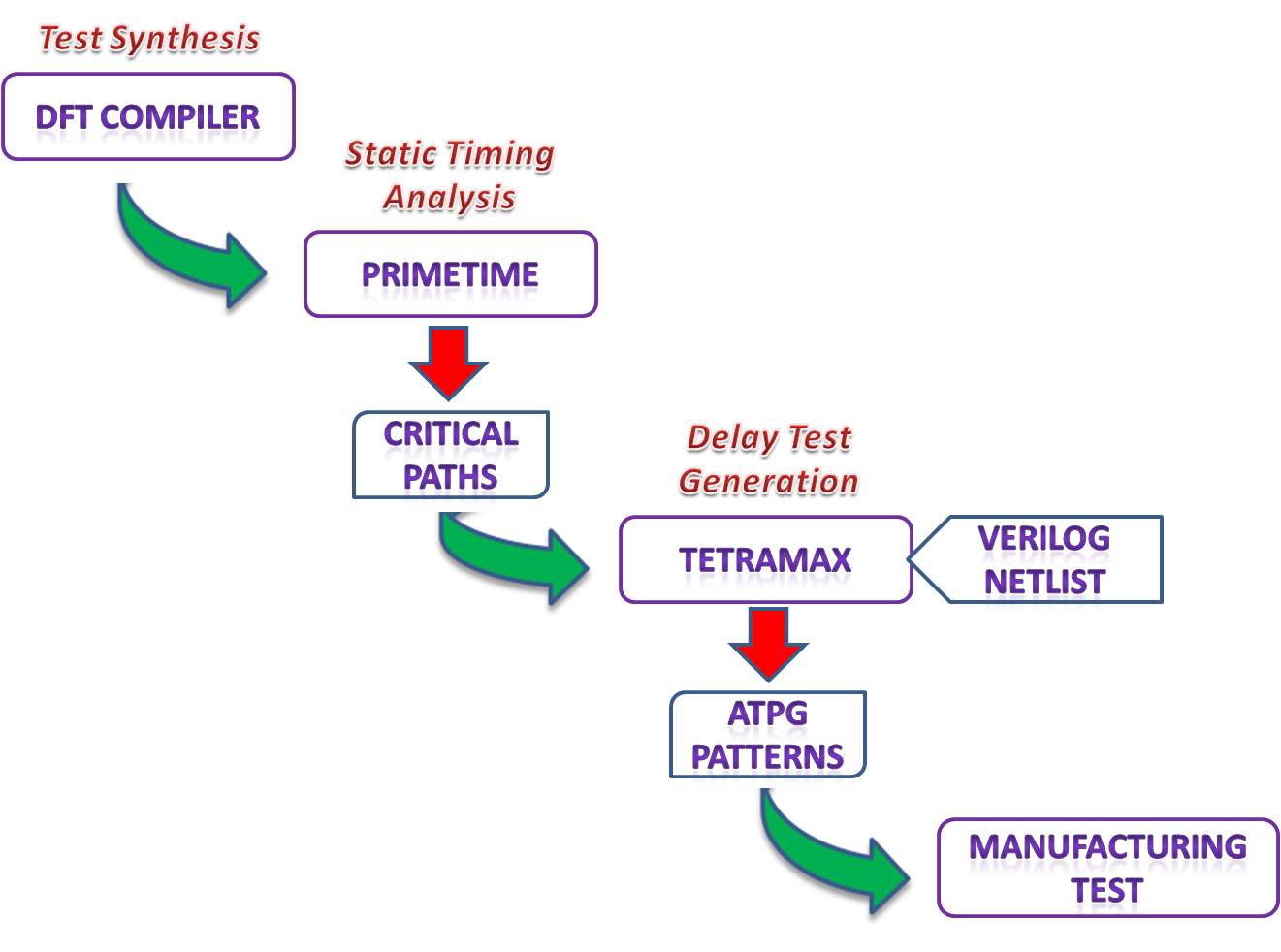Tutorial : Path Delay Fault Testing of ASIC's - Leon SoC
By Karthik Sundaramurthy, ECE 599 - Summer 2007, Submitted on 08/10/2007
ATPG Testing Slides with Notes (pdf)
Path Delay Testing Slides with Notes (pdf)
Introduction
This tutorial is intended to give a basic introduction into path delay fault testing of integrated circuits.
Path delay fault tests use a fault model where the defects may occur at one or more points along a path, usually a critical timing path.
For path delay fault tests, the propagation path is fully specified to ensure that the complete path is tested. The target
paths for path delay fault tests are usually provided by a STA tool like PrimeTime. The tutorial is comprised of 3
important steps and has to be performed with three separate tools from Synopsys.

Figure : Path Delay Fault Testing Flow
As shown in the figure above, the tools that will be used for this tutorial are:
* Synopsys Design Compiler to synthesize the design.
* Synopsys Primetime to perform static timing analysis and determine the most critical paths.
* Synopsys TetraMax to generate vectors to perform manufacturing tests.
Path delay tests are in general two-pattern tests. The first vector sensitizes the path by applying non-controlling
values to the off-state inputs. The second vector propagates the transiton through the combinational path under test.

Figure : Path Delay Fault Testing vector pattern
1. Create a working directory and copy over the files
cp -R /usr/cad/course/path_delay_testing soc_test
cd soc_test
2. Extract the tar'ed files and invoke ModelSim
tcsh
source setup.csh
mentor_tools
cmd_1a
This command extracts all the zipped files and compiles them using Modelsim. This command also sets up the directory structure
and files required for the following steps.
3. Setting up Synopsys environment and synthesizing the Leon Soc design files
synopsys_latest_tools
start_synth
The first two commands set up the Synopsys environment. The command leon_synth_scan perfroms synthesis of the
Leon SoC with test. All the flip-flops in the design are replaced with scan type or multiplexed flip-flops.
The scan structure thus inserted during synthesis leads to a increase in the overall area of the design. Thus the
design has to be optimized using the compile command.
Note: The synthesis step could take anywhere from 50 - 65 minutes. This is due to the large number of files associated with
the design.
A detailed explanation of the steps used during synthesis has been provided here
4. Static timing analysis using Synopsys PrimeTime
start_primetime
This command performs static timing analysis on the synthesized verilog netlist to obtain the most critical paths in the design.
Primtime can be configured to output the critical paths in a text format. However, TetraMax (ATPG tool) requires the paths
in a different format. So, a TCL procedure (write_delay_paths) has been supplied by TetraMax to produce the PrimeTime output in
a TetraMax acceptible format. This has been defined in the file pt2tmax.tcl
An executable file has been created for this step. A detailed explanation has been provided here
A sample file which shows the critical path is shown here
5. Automatic Delay Test Pattern Generation using Synopsys TetraMax
start_tmax
This step is used to generate ATPG patterns for the delay test for the most critical paths generated by PrimeTime.
The critical paths are read into TetraMax during pattern generation.
A detailed explanation of the steps used during pattern generation has been provided here

